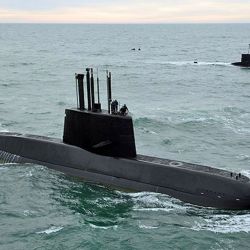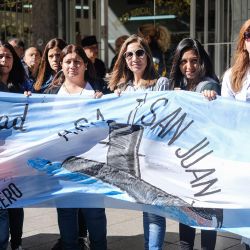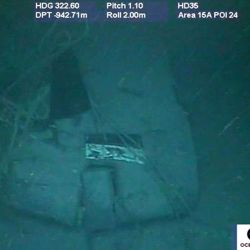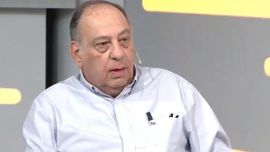Two years have passed since the tragic sinking of the ARA San Juan. The submarine was on its way to Mar del Plata from Ushuaia after a scheduled training exercise. Navy officials unexpectedly lost contact with the vessel, later discovering that it had imploded and sank in the southern Atlantic ocean. One year later, remains of the ARA San Juan were found 907 metres underwater.
The Argentine Navy and the families of the fallen 44 crew-members will be remembered this Friday, November 15, in Mar del Plata at a ceremony. President Mauricio Macri is unlikely to be present, with Defence Minister Oscar Aguad expected to represent the government at the ceremony. Remembrance services will start at 3.30pm local time at the city’s Naval Base, where family members of the crew will be awarded a “Military Honour” award, on behalf of the fallen crew, officials said.
Earlier in the day, family members will attend a private religious ceremony. The service will be held at the chapel located inside the Navy's base in Mar del Plata, from which the submarine left on October 25, 2017.
However, two years from the submarine's disappearance, many questions remain unanswered.
The investigation
One of the most probable hypotheses for the submarine’s disappearance focuses on the working theory that an “operation error” from the ventilation valve “Eco-19” was responsible for the vessel's disappearance, according to Judge Marta Yáñez’s official case file.
The internal ventilation valve, investigations have revealed, could have allowed water to flow into the battery tanks of the submarine, generating a short-circuit in the battery tank. The fire could have generated increased levels of hydrogen, according to sources consulted by the Perfil newspaper that had access to a report carried out by a commission of experts working for the Defence Ministry.
This, the file details, could be because the ventilation system was “barely closed,” or that some error, whether it be “mechanic, human, or by chance,” occurred.
The submarine’s commander, Capitain Pedro Fernández, said in his last statement to his superiors – made in the early hours of November 15 – that the vessel “was cruising at surface-level due to a short-circuit in the battery tanks, originating from a fire, most likely due to water entering the battery tank through the ventilation system.”
Formal charges
To date, some officers have been charged for their alleged role in the tragedy. They include ex-commander of the Submarine Division of the Navy, Claudio Villamide, who received the incident report; Luis Enrique López Mazzeo, former commander of Enlistment and Training for the Navy; José Marti Garro, chief of operations; Eduardo Malchiodi, head of Maintenance for the Navy; Jorge Andrés Sulia, ex-lieutenant-commander and former logistics chief of the submarine fleet; Hugo Miguel Correa, ex-commander and former head of operations of the Armed Forces; and Hector Alonso, chief-of-staff of COFS at the time of sinking.
To date, five of the Navy officers have refused to testify before the court, listening only to the proceedings to date and departing. Villamide and López Mazzeo are those who would have given the final authorisation for the vessel to sail, determining if it was in safe conditions to navigate.
In this moment, three different plaintiffs in separate complaints exist: Luis Tagliapietra, the father of a lost crew-member, lawyers Fernando Burlando, Valeria Carreras, and Lorena Arias as part of a joint complaint; and Sonia Kreischer.
All charges are filed under “investigation of a crime,” however the causes for the sinking of the ARA San Juan have not been fully specified, according to the families’ complaints. A total 120 witnesses have already given testimony, including Defense Minister Aguad and President Macri, who sent his in writing. The content of their testimonies has remained secret.
The ARA San Juan disappeared mysteriously in November 2017 on route to Argentina's naval base in Mar del Plata. Its crushed wreckage was located almost exactly one year later on November 16, 2018, by the Seabed Constructor, a ship owned by US search firm Ocean Infinity, after a long, traumatic search for submarine that drew attention from across the globe.
The remains of the vessel now lay "in an area of 70 to 75 metres of debris," 920 metres below sea level, some 460 kilometres southeast of the Patagonian city of Comodoro Rivadavia.
–Perfíl/TIME
























Comments